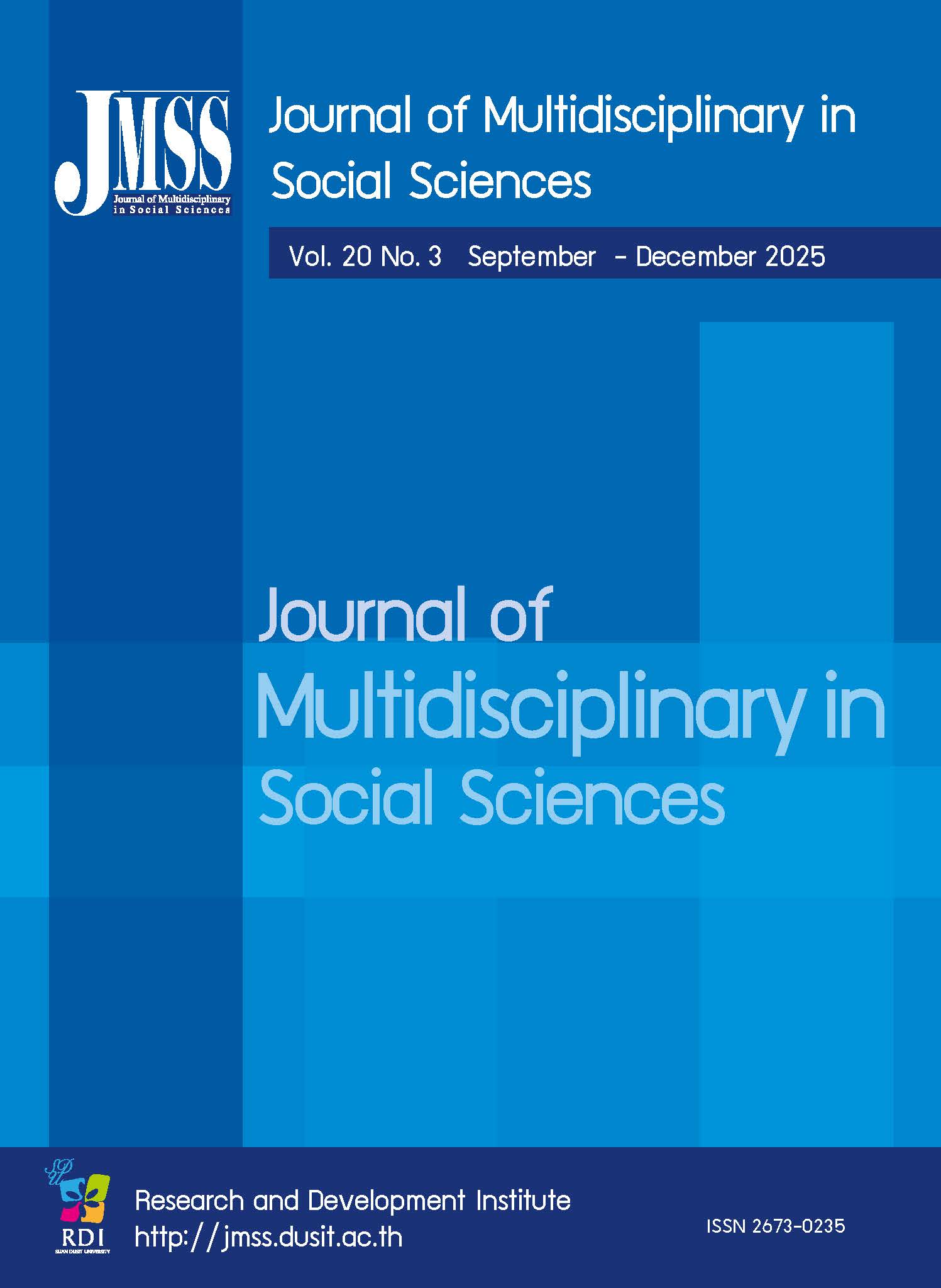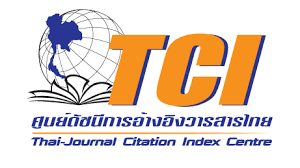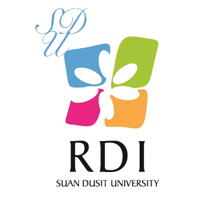Why Financial Knowledge of Valuation Methodologies is Crucial for Accounting Professions
Keywords:
Valuation methodologies, Present value measurement technique, Measurement basis in IFRS standardsAbstract
The main objective of this article is to highlight concerns about the importance of financial knowledge, specifically regarding valuation methodologies and present value measurement used in both Thai and international financial reporting standards. Since the Conceptual Framework for Financial Reporting allows companies to choose “current value measurement” as one of the techniques to arrive at a measure, it undeniably brings accounting much closer to finance than ever before. Regardless of the technical terms of current value measurement used in Thai Accounting Standards (TASs) or Thai Financial Reporting Standards (TFRSs)—such as fair value, value in use, or fulfilment value—the complexity of present value measurement techniques makes current value measurement difficult to understand and apply, especially for accountants or auditors who lack sufficient financial knowledge and experience with valuation methodologies.
This issue is exacerbated by the fact that most current accounting curricula in Thailand and other countries require only one finance subject, where concepts such as time value of money, present value measurement, central estimate of cash flows, and risk premium are only briefly covered. Although this financial knowledge might be revisited when specific TASs or TFRSs are taught, the limited time allocated to each accounting subject raises questions about the depth of understanding of these complex topics. To address this issue, if adding another finance subject focused on valuation methodologies is not feasible, it is suggested that all accounting programs should at least enhance the existing finance subject by: (a) discussing this problem with finance instructors and requesting them to devote sufficient time to topics related to value measurement, and (b) making accounting students aware of the importance of financial knowledge to the accounting profession, encouraging them to focus more on key concepts of valuation and present value measurement.
In conclusion, this paper emphasizes the close relationship between accounting and finance, and the critical importance of finance, especially for financial accounting. Given the increasing trend of current value measurement, it is imperative to provide prospective accounting professionals with sufficient financial knowledge. Improved understanding will empower accountants and auditors to handle the complexities of TASs and TFRSs involving current/fair value measurement, ultimately strengthening the reliability and faithful representation of companies’ financial statements and enhancing investment decision-making for investors and other financial statement users worldwide.
References
Accountingtools. (2022). Fair Value Accounting. Retrieved May 12, 2022, from https://www.accountingtools.com/
articles/ fair-value-accounting.html
Ateneo de Zamboanga University. (2019). Bachelor of Science in Accountancy Curriculum. Retrieved May 12, 2022, from https://www.adzu.edu.ph/wp-content/uploads/2019/08/BS-Accountancy-Prospectus.pdf
Chulalongkorn University. (2017). Fundamentals of Corporate Finance. Retrieved May 9, 2022, from http://findept.acc.chula.ac.th/downloads/syllabus/2604294%20FUND%20CORP%20FIN_2560_2_Sec1.pdf
De La Salle University. (2022). Bachelor of Science in Accountancy. Retrieved May 12, 2022, from https://www.dlsu.
edu.ph/colleges/rvrcob/undergraduate-degree-programs/bsa/
Deloitte Touche Tohmatsu Limited. (2013). IFRS in Focus - Valuation methodologies. Retrieved April 15, 2022, from https://www.iasplus.com/en/publications/global/ifrs-in-focus/2013/ifrs-in-focus-ifrs13
Deloitte Touche Tohmatsu Limited. (2022a). IAS 19 — Employee Benefits. Retrieved April 15, 2022, from https://www.iasplus.com/en/standards/ias/ias19
Deloitte Touche Tohmatsu Limited. (2022b). IAS 36 — Impairment of Assets. Retrieved April 15, 2022, from https://www.iasplus.com/en/standards/ias/ias36
Deloitte Touche Tohmatsu Limited. (2022c). IAS 37 — Provisions, Contingent Liabilities and Contingent Assets. Retrieved April 15, 2022, from https://www.iasplus.com/en/standards/ias/ias37
Deloitte Touche Tohmatsu Limited. (2022d). IFRS 13 — Fair Value Measurement. Retrieved April 15, 2022, from https://www.iasplus.com/en/standards/ifrs/ifrs13
Deloitte Touche Tohmatsu Limited. (2022e). IAS 16 — Property, Plant and Equipment. Retrieved April 15, 2022, from https://www.iasplus.com/en/standards/ias/ias16
Deloitte Touche Tohmatsu Limited. (2022f). IAS 38 — Intangible Assets. Retrieved April 15, 2022, from https://www.iasplus.com/en/standards/ias/ias38
Deloitte Touche Tohmatsu Limited. (2022g). IAS 40 — Investment Property. Retrieved April 15, 2022, from https://www.iasplus.com/en/standards/ias/ias40
Deloitte Touche Tohmatsu Limited. (2022h). IFRS 9 — Financial Instruments. Retrieved April 15, 2022, from https://www.iasplus.com/en/standards/ifrs/ifrs9
Diponegoro University. (2017). Undergraduate Accounting Program Curriculum 2017. Retrieved May 9, 2022, from https://akuntansi.feb.undip.ac.id/?page_id=84&lang=en
Divestopedia. (2016). Valuation Approach. Retrieved May 15, 2022, from https://www.divestopedia.com/definition/ 907/valuationapproach#:~:text=A%20valuation%20approach%20is%20the,the%20equity%20interest%20or%20asset
IFRS Foundation. (2013). Education Illustrative examples to accompany IFRS 13 Fair Value Measurement Unquoted equity instruments within the scope of IFRS 9 Financial Instruments. Retrieved May 9, 2022, from https://www.ifrs.org/content/dam/ifrs/supporting-implementation/ifrs-13/education-ifrs-13-eng.pdf
IFRS Foundation. (2018). Conceptual Framework for Financial Reporting. Retrieved May 9, 2022, from https://www.ifrs.org/content/dam/ifrs/publications/pdf-standards/english/2021/issued/part-a/conceptual-framework- for-financial-reporting.pdf
IFRS Foundation. (2019). Discount rates in IFRS Standards. Retrieved April 15, 2022, from https://www.ifrs.org/
content/dam/ifrs/project/discount-rates/project-summary.pdf
Jaijairam, P. (2012). Fair Value Accounting vs. Historical Cost Accounting. Review of Business Information Systems (RBIS), 17(1), 1-6.
Matsane, A., Nakpodia, F., & Areneke, G. (2022). Assessing the value relevance of fair value measurements: a South African perspective. Corporate Governance, 22(7), 1405-1424.
Nanyang Technological University. (2021). Bachelor of Accountancy. Retrieved May 9, 2022, from https://www.ntu.
edu.sg/education/undergraduate-programme/bachelor-of-accountancy
National University of Singapore. (2021). BBA(Accountancy) Curriculum AY2021/2022 Onwards. Retrieved May 9, 2022, from https://bba.nus.edu.sg/academic-programmes/bba-accountancy-programme/bbaacc-curriculum-ay
-2022-onward/
Oyewo, B. (2020). Post-implementation challenges of fair value measurement (IFRS 13): some empirical evidence. African Journal of Economic and Management Studies, 11(4), 587-607.
Oyewo, B., Emebinah, E., & Savage, R. (2020). Challenges in auditing fair value measurement and accounting estimates, some evidence from the field. Journal of Financial Reporting and Accounting, 18(1), 51-75.
Suan Dusit University. (2021). Bachelor of Accountancy Program (Revised 2022). Retrieved May 9, 2022, from http://accounting.dusit.ac.th/home/
Thailand Federation of Accounting Professions (TFAC). (2021). Thai Financial Reporting Standards, Collected Edition, Book 1. Bangkok, Active Print Company Limited.
Thammasat University. (2018). Bachelor of Accountancy Program (Revised 2018)). Retrieved May 9, 2022, from https://www.tbs.tu.ac.th/wpcontent/uploads/2020/03/4%E0%B8%9B%E0%B8%B5%E0%B8%9A%E0%B8%B1%E0%B8%8D%E0%B8%8A%E0%B8%B5-Thai-2561.pdf
The International Federation of Accountants (IFAC). (2019). International Education Standard (IES) 2: Initial Professional Development – Technical Competence (Revised). Retrieved May 9, 2022, from https://www.ifac.org/system/files/publications/files/IAESB-IES-2-Techical-Competence.pdf
Universitas Airlangga. (2021). Curriculum 2021. Retrieved May 9, 2022, from https://akuntansi.feb.unair.ac.id/ informasi-akademik/kurikulum.html
Universiti Malaya. (2022). Bachelor of Accounting Programme Handbook 2021/2022. Retrieved May 12, 2022, from https://fpe.um.edu.my/FPE/BAcc_Bachelor%20of%20Accounting%20HANDBOOK%20(updated%2018.2.22).pdf
Universiti Teknologi MARA. (2021). Bachelor of Accountancy. Retrieved May 9, 2022, from https://accountancy.uitm.edu.my/index.php/en/component/content/article/19programme/undergraduate/bachelor/32-ac220-bachelor-of-accountancy-hons?Itemid=101
Downloads
Published
How to Cite
Issue
Section
License
Copyright (c) 2024 Journal of Multidisciplinary in Social Sciences

This work is licensed under a Creative Commons Attribution-NonCommercial-NoDerivatives 4.0 International License.








